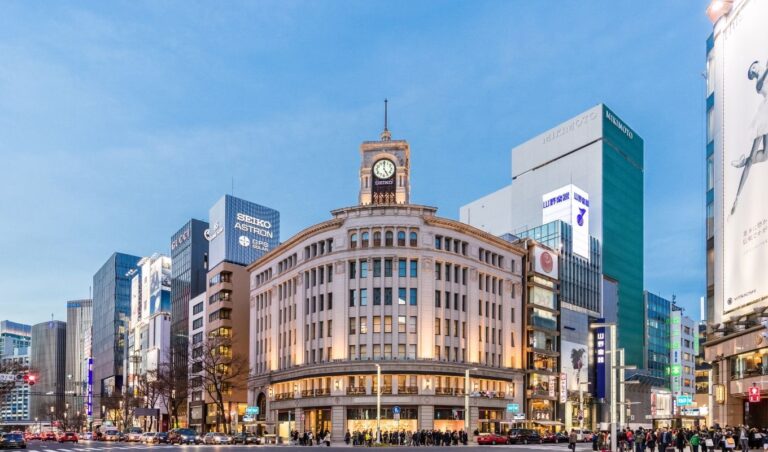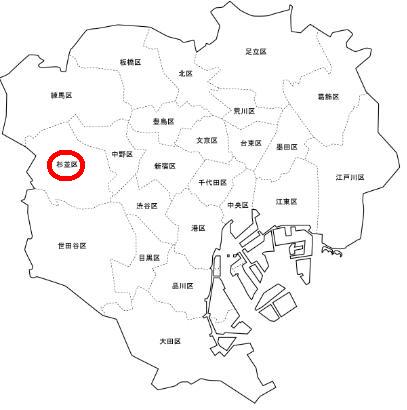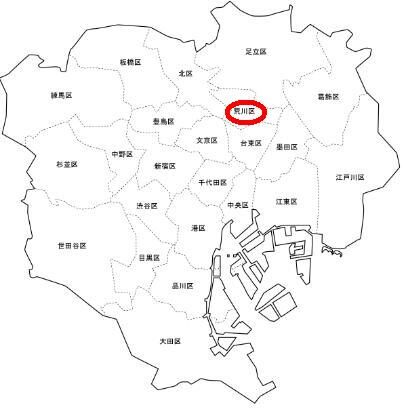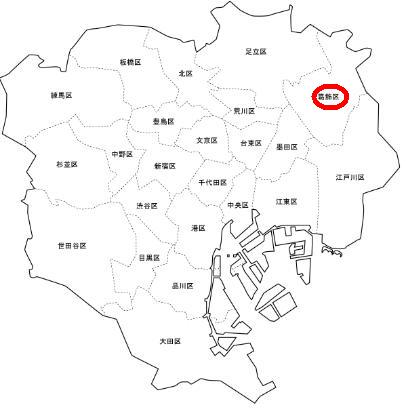
Toshima-ku is located in the northwest part of Tokyo’s 23 wards and is home to Mejiro, a sub-center and high-class residential area centered on Ikebukuro Station; Sugamo, famous as Harajuku for grandmothers; Rikkyo University; Gakushuin University; Tokyo College of Music; Teikyo Heisei University; Taisho University, among others.
Sightseeing spots in Toshima City
There are also Zoshigaya Cemetery, Jigenji Temple, Somei Cemetery, etc. where many famous people are laid to rest. The place name “Toshima” is not in Toshima Ward, but in Kita Ward. Toshimaen” is also not in Toshima Ward, but in Nerima Ward.
The Somei-Yoshino cherry tree originated in the old Somei Village, which is located between Komagome and Sugamo in present-day Toshima Ward.
Togenuki Jizo (guardian deity of children)
3-35-2 Sugamo, Toshima-ku, Tokyo
Togenuki Jizo is located in Koganji Temple in Sugamo. The Togenuki Jizo Son Gokagei, which is given at the main hall of Togenuki Jizo, is a 4cm long and 1.5cm wide sheet of Japanese paper with the image of the Togenuki Jizo Son drawn in the center.
Sunshine City
3-1-3 Higashi-Ikebukuro, Toshima-ku, Tokyo
Sunshine City is a landmark of Ikebukuro with an aquarium , Namco/Nanja Town, planetarium, theaters and other leisure facilities, exhibition halls, and even apartments.
Sunshine Aquarium
3-1-3 Higashi-Ikebukuro, Toshima-ku, Tokyo
The Sunshine Aquarium is located in the World Import Mart in Sunshine City and is famous for its rooftop aquarium. It is an aquarium with a variety of exhibits, such as the “Zoo-Zoo House,” which focuses on relatively large aquatic and terrestrial animals such as sun eels, wolf eels, clione, and other rare fish and aquatic and terrestrial animals in the world, and sunfish.
Museum of the Ancient Orient
3-1-3 Higashi-Ikebukuro, Toshima-ku, Tokyo
The Museum of the Ancient Orient is a museum that collects and exhibits materials related to the ancient Orient. The Orient is the cradle of human civilizations such as Egypt, Mesopotamia, Persia, and the Silk Road. The Museum of the Ancient Orient has a collection of about 4,000 items of archaeological materials and art works from the ancient Orient.
Zoshigaya Cemetery
4, Minami Ikebukuro, Toshima-ku, Tokyo
Zoshigaya Cemetery is one of the cemeteries in Tokyo where many cultural figures and celebrities are buried, and is also famous as the setting of Soseki Natsume’s novel Kokoro. The cemetery was established in 1874 under the name of Zoshigaya Asahidecho Cemetery, and was renamed Zoshigaya Asahidecho Cemetery in 1935 under the present name of Zoshigaya Cemetery. In 1935, the name was changed to the present Zoshigaya Cemetery.
Somei Reien
5 Komagome, Toshima-ku, Tokyo
Somei Cemetery, also called Somei Cemetery (old name), is a famous cherry blossom viewing spot. It is said to be the birthplace of Someiyoshino, the cherry tree represented by the cherry blossom front. In the Edo period, it was the graveyard of the Mito Tokugawa family, one of the three Tokugawa families. In 1872 (Meiji 4), it became a cemetery for Shinto funeral, and in 1935 (Showa 10), it became the present Somei Reien Cemetery. The name was changed to the present Somei Cemetery in 1935.
Houmyouji Temple
3-18-18 Minami Ikebukuro, Toshima-ku, Tokyo
Houmyoji Temple is home to the Susuki Mimizuku, which is made of bundles of ears of Japanese pampas grass, and Kishimojin-do Hall, which is famous as the god of child rearing. The area behind Kishimojindo was the location of the detective agency where Yutaka Mizutani played the role of a detective.
Honmyouji Temple
5-35-6 Sugamo, Toshima-ku, Tokyo
Honmyouji Temple is home to the tomb of Toyama Kagemoto, an Edo period magistrate who is said to be the model for Toyama no Kinsan. The temple was built by Tokugawa Ieyasu when he entered the Edo period (1603-1868), and moved to its current location in Sugamo in 1910. In addition to the tomb of Kagegen Toyama, which is designated as a historic site by the Tokyo Metropolitan Government, there is also a memorial tower for the Great Mereki Fire and the tomb of Shusaku Chiba, the sacred sword.






